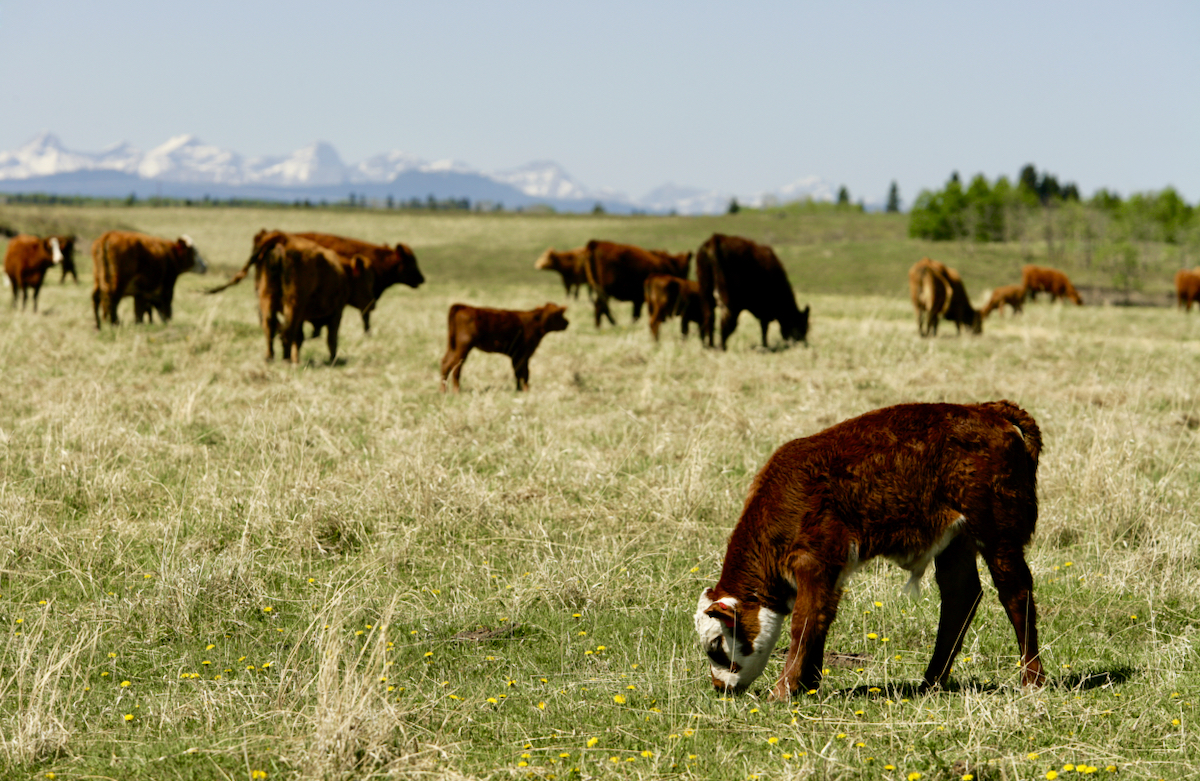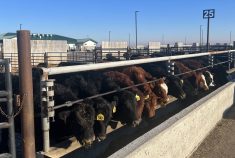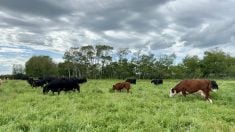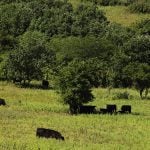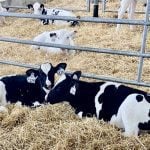As we approach the end of the fall calf run, feedlots are working diligently to get new calves on full feed as quickly as possible. This fall brought above-average temperatures and fewer storms, making it easier for feedlots to get calves settled and eating well. With calf prices at record highs, these calves must grow efficiently and produce heavy carcasses to ensure profitability.
To support this goal, various growth or productivity-enhancing technologies have proven to provide a high return on investment and are widely used in the Canadian beef industry. These conventional technologies include hormonal implants, and in-feed estrous suppressants (for heifers), beta-adrenergic ligands (β-AL) and ionophores. In this article, I will highlight their effect on the efficiency and productivity of feeder cattle, as well as their environmental benefits.
Recent studies conducted by researchers from the University of Saskatchewan, University of Manitoba, Agriculture and Agri-Food Canada, and Feedlot Health Management Services Ltd. (now Telus Agriculture and Consumer Goods) provide valuable insights into the effect of these technologies on beef cattle growth performance and the environment footprint of beef (Ribeiro et al., 2020; Ribeiro et al., 2021; Aboagye et al. 2022; Boonstra et al., 2023).
Read Also

Building demand together: The impact of Canada’s beef import levy
The beef import levy has become a central tool for ensuring balance in Canada’s beef industry
In the first set of studies, the use of conventional feed additives, including tylosin to control liver abscesses, improved average daily gain by 10.1 per cent for steers and 8.8 per cent for heifers. Feed efficiency increased by 7.2 per cent for steers and 7.9 per cent for heifers, while carcass weight rose by 2.8 per cent for steers and 5.9 per cent for heifers, with no negative effects on carcass yield or quality grades.
The addition of hormonal implants further enhanced these results, leading to an additional average daily gain increase of 18.2 per cent for steers and 9.7 per cent for heifers. Feed efficiency improved by 14.2 per cent for steers and eight per cent for heifers, and carcass weight increased by 5.4 per cent for steers and 3.8 per cent for heifers.
In a multi-year study spanning four years, we found that during the background phase, hormonal implants improved average daily gain by 11.3 per cent for steers and 8.4 per cent for heifers, and feed efficiency by 6.7 per cent for steers and 5.9 per cent for heifers. In the finishing phase, the benefits were even greater, with average daily gain increasing by 26 per cent for steers and 15 per cent for heifers, feed efficiency improving by 9.3 per cent for steers and 5.7 per cent for heifers, and carcass weight increasing by 9.3 per cent for steers and 8.3 per cent for heifers. The dressing percentage of carcasses also increased by 0.5 per cent units for steers and 0.9 per cent units for heifers.
These studies also assessed the environmental effect of these technologies. The use of conventional feed additives reduced the land and water needed to feed steers and heifers by 7.9 per cent and 10.5 per cent, respectively. Greenhouse gas emissions per kilogram of beef produced decreased by 5.8 per cent for steers and 6.7 per cent for heifers, while ammonia (NH3) emissions per kilogram of beef dropped by 4.3 per cent for steers and 6.7 per cent for heifers.
In the first set of finishing studies, using hormonal implants reduced both land and water use by 19.5 per cent for steers and 14.6 per cent for heifers. Greenhouse gas emissions decreased by 15.8 per cent for steers and 10.5 per cent for heifers, while NH3 emissions fell by 11 per cent for steers and 3.4 per cent for heifers. In the multi-year study, implanting cattle reduced greenhouse gas emissions by 10.1 per cent for steers and 3.8 per cent for heifers, and NH3 emissions by 7.4 per cent for steers and 4.3 per cent for heifers. The land required to produce cattle feed was also reduced by 9.9 per cent for steers and 6.6 per cent for heifers, with water use decreasing by 10.1 per cent for steers and 6.4 per cent for heifers.
These findings clearly show that growth-enhancing technologies can significantly improve beef producers’ profitability. These technologies have undergone rigorous government evaluation to ensure they do not negatively affect animal health, welfare or food safety. Contrary to common perceptions, these technologies also have positive environmental effects by reducing greenhouse gas and NH3 emissions, as well as the land and water needed to produce beef.
In summary, with a smaller beef cow herd and record-high feeder calf prices, using these technologies is essential for maintaining producer profitability and ensuring a steady supply of beef to consumers, as they allow for more beef production per animal. To achieve the best results, it is important to seek professional advice from your nutritionist and/or veterinarian regarding the protocols for using these technologies, as they may vary based on the class of cattle, feeding duration, diet and operational goals.
References
- Aboagye, I.A., Cordeiro, M.R.C, McAllister, T.A., May, M.L., Hannon, S.J., Booker, C.W., et al. 2022., Environmental performance of commercial beef production systems utilizing conventional productivity-enhancing technologies. Transl. Anim. Sci. 6: 1–15.
- Boonstra, E., Aboagye, I.A., McAllister, T.A., Mengistu, G.F., Fulawka, D.L., Cordeiro, M.R.C., et al., 2023. Modelling environmental impacts associated with the removal of productivity-enhancing technologies from Canadian feedlots: a case study. Can. J. Anim. Sci. 103: 249–261.
- Ribeiro, G.O., M.L. May, S.L. Parr, O.C. Schunicht, L.O. Burciaga-Robles, S.J. Hannon, T.M. Grimson, C.W. Booker, and T.A. McAllister, 2020. Effects of conventional and non-conventional growth-enhancing technologies for finishing feedlot beef steers. Appl. Anim. Sci. 36: 524–536.
- Ribeiro, G.O., S. Terry, M. Hünerberg, K. Ominski, J. Francis, and T.A. McAllister, 2021. Growth performance of beef cattle. Can. J. Anim. Sci. 101: 723–734.
– Dr. Gabriel Ribeiro is an assistant professor and the Saskatchewan Beef Industry Chair in the animal and poultry science department at the University of Saskatchewan. He has a DVM, and M.Sc. and PhD in animal science (ruminant nutrition).


